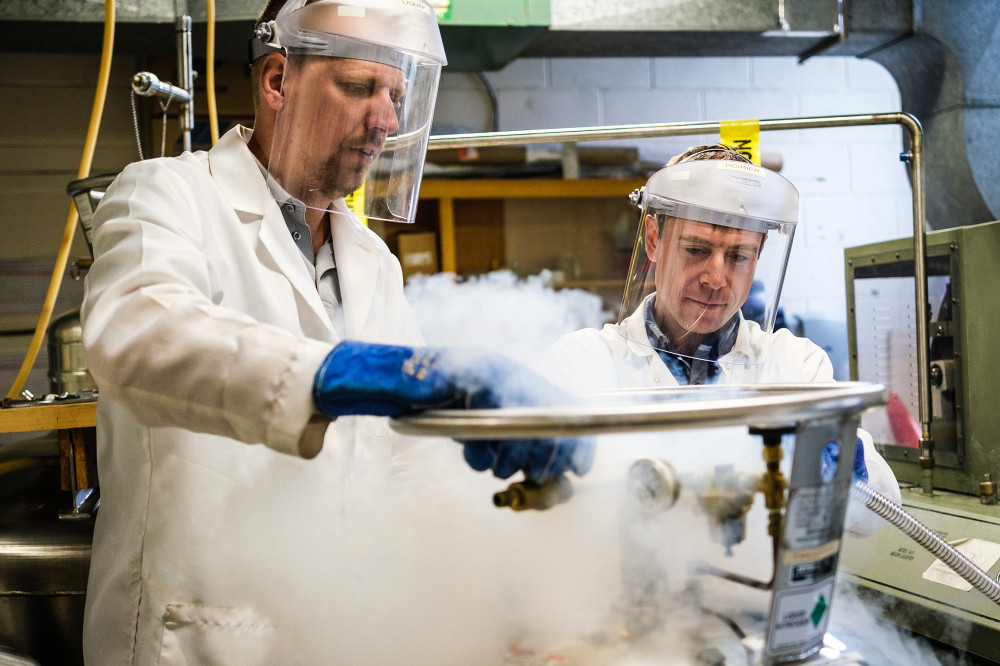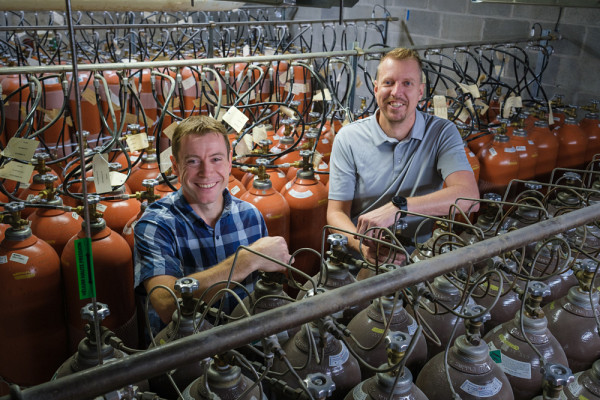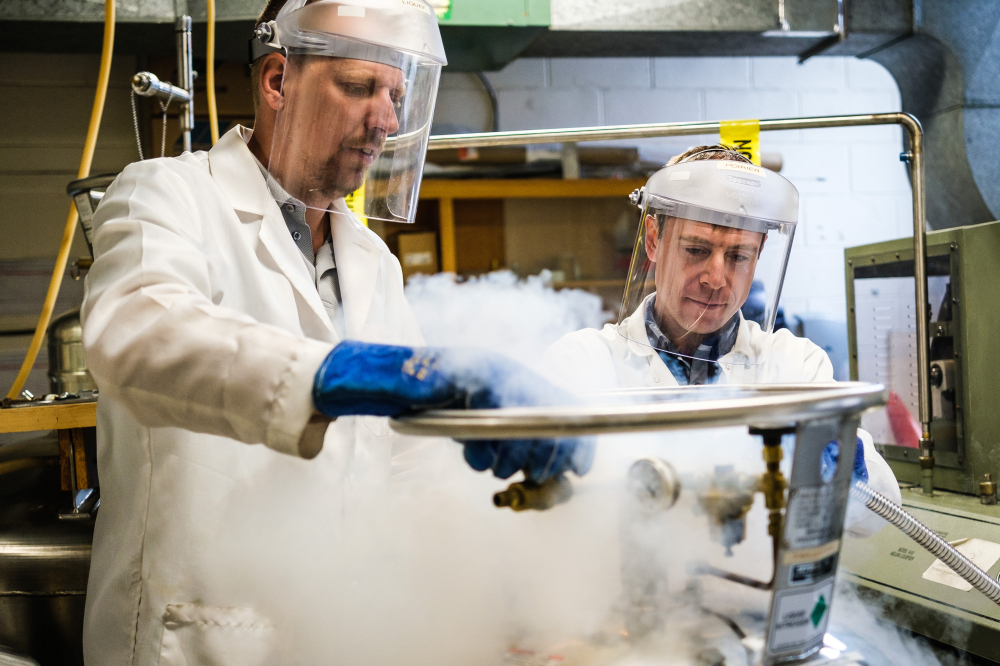
Photo: Michel Caron – UdeS
A big problem is gradually emerging in the scientific and medical sphere. According to some famous people, such as the American physicist Robert Richardson, within 30 years, humans will completely exhaust the Earth’s helium resources. While the unit price of this precious gas has more than doubled over the past 10 years, most research organizations are rushing to acquire recycling systems to reduce their costs during this shortage. A crisis for which the University of Sherbrooke was already prepared in 1982.
Of course, when we think of helium, we quickly imagine the allure of its gaseous form: balloons, rockets, and a low, high-pitched voice. However, what few people know is the use of liquid helium in medical imaging, in quantum materials and in quantum computing.
To contextualize the main applications of this noble gas, we must first understand its cryogenic properties: helium is an extremely stable gas, meaning that it reacts very little with other substances. Under the right conditions, it is considered a reliable and controllable element.
In its liquid state, helium’s boiling point approaches absolute zero at -269°C, making it a perfect candidate when you want to cool something down to very low temperatures. However, the careless waste of this crucial resource in several sectors forces certain research bodies to be more creative and conscientious in their often incredible consumption of helium.
To fix this, several players in industry and academia are turning to eco-responsibility… And the Quantum Institute is a leader in this field with its ingenious recycling system.
Recycle to save
As with several other research centers, the Quantum Institute absolutely needs helium. Every day, more than 200 liters of liquid helium are used for experimental purposes. Whether cooling a qubit during analysis or conducting tests with superconducting material, our researchers simply cannot do without this coolant.
Access to this precious by-product of oil exploitation is very expensive in normal times, with a unit price hovering around $30 per litre, compared to $10 per liter in 2012. With an annual consumption of almost 50,000 liters the price becomes quite excessive. Fortunately, the Physics Department saw fit to invest in a recycling system.
Recycling process
Helium begins its journey by being used in an experiment; it is first stored in liquid form in large cylinders shaped to keep it cool.
The student then transfers the cylinder to his measuring system. During the experiment itself, helium inevitably heats up and becomes gaseous when it reaches -269°C. Any gas that escapes is immediately collected by tubes connected to balloons in the basement of the Physics Department. With 11 laboratories in need of a helium supply, a multitude of tubes twisting around each other clearly indicate the path to follow.
In the basement there are two balloons that store a huge amount of helium. When these balloons are full, three compressors compress the helium to reduce the space needed to store the gas and send it to cylinders located in an adjacent room. Each of these tanks contains helium gas compressed to 2000 psi. After that, the gas is sent to a liquefaction device, which produces almost 45 liters of liquid helium per hour. In comparison, most common liquids in Quebec have a capacity of 20 liters per day, which is a big difference in production. Finally, the helium completes its journey by being transferred into large cylinders, which will be sent to laboratories to repeat the process.

Photo: Michel Caron – UdeS
Although ingenious, the system has certain drawbacks that constant monitoring can mitigate: “Handling losses, and especially the huge recycling network, account for most of the helium leaks,” explains Bobby Rivard, a member of the technical team. As soon as a malfunction occurs, we are alerted by our sensors that record the physical data of the system, such as the pressure and the rate of helium evaporation. The only problem is that you can’t always know exactly where the leak is. So we often have to walk around with helium detectors to find the source. Unfortunately, this is a factor we cannot influence. This is partly why we follow the network even on weekends. »
Sustainable development
With the volatility of the helium market, several research centers have been forced to revise their stockpiling action plans. For their part, the Quantum Institute and the Department of Physics of the University of Sherbrooke ensure some long-term financial security with their recycling system. While others have to reduce their consumption due to the prohibitive cost of helium, the Quantum Institute doesn’t really have that problem: the efficient reuse of helium in laboratories already saves a large part of this rare resource. Moreover, since the transportation of helium is extremely expensive – both in terms of money and logistics – the possibility of limiting transportation and procurement costs increases the available funds for investment in research projects.
In total, the Physics Department sees a minimum loss of 5% on its 50,000 liters per year. In addition, most recorded losses are due to the vastness of the recycling network, mechanical breakdowns and human error. You should know that helium is small at the molecular level; the slightest crack in the pipes, and the gas escapes quickly.
It is difficult to protect against the unexpected, but with a team of experts monitoring the equipment 24/7 and a state-of-the-art recycling system, the Quantum Institute and the Department of Physics are well placed to boast independence from the fragile and volatile helium market.

